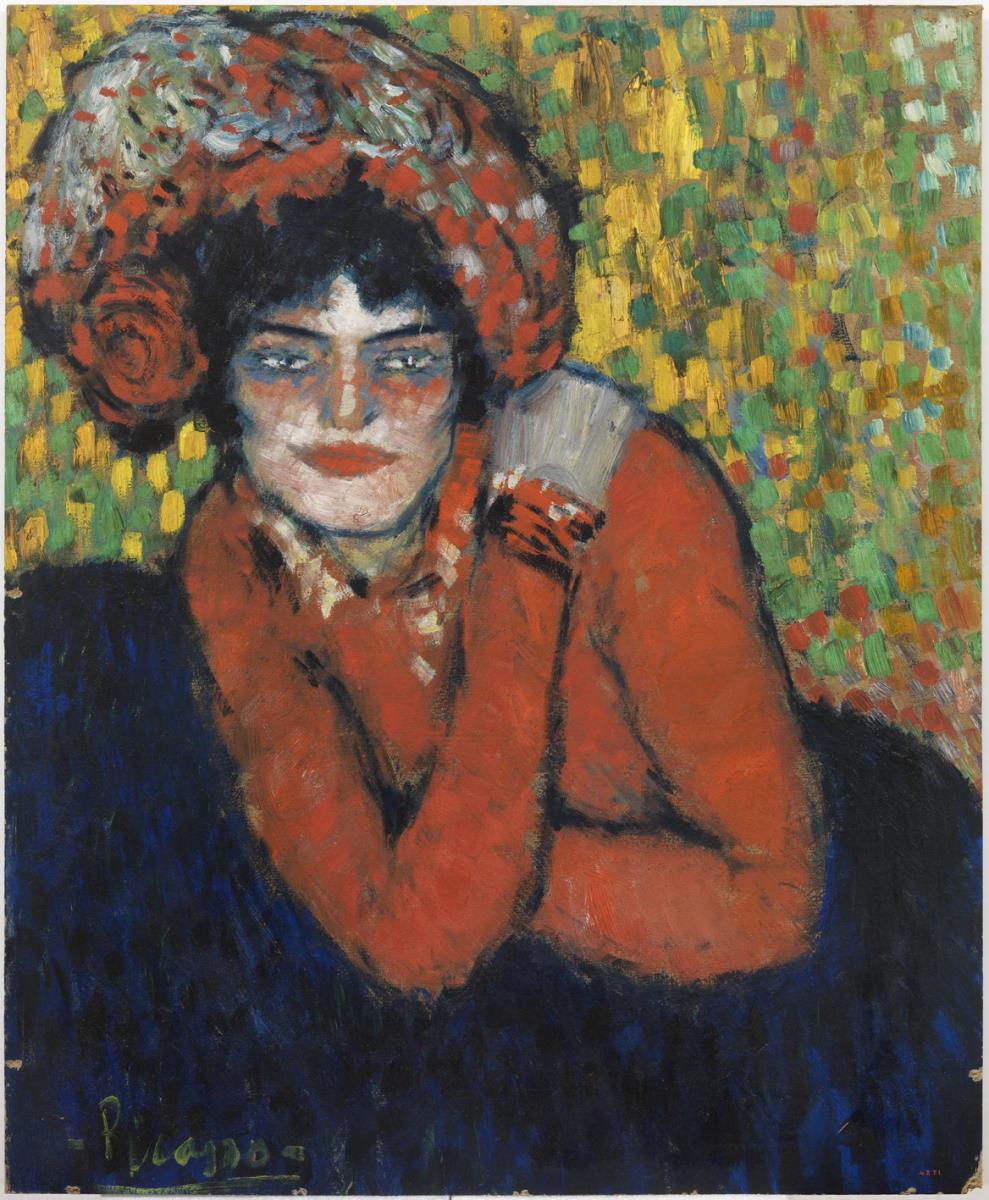Pablo Picasso: Picasso and Manuel Pallarès contemplating the Eiffel Tower. Barcelona or Paris, 1900. Sepia ink of pen on paper. 8.8 x 11.1 cm (irregular). Museu Picasso, Barcelona. Donation Pablo Picasso, 1970. MPB 110.996. Museu Picasso, Barcelona. Photography, Gasull Fotografia. © Successió Pablo Picasso, VEGAP, Madrid 2018
The exhibition of the Vollard Gallery of 1901 was a turning point in the career of Pablo Picasso. It was at that time that Paris discovered his talent through the positive reviews that appeared in the press of the time, some of which augured a great future, even though he was still only 19 years old.
Prior to this, in the autumn of 1900, Picasso arrived in Paris for the first time and made contact with Pere Mañach, a Barcelonan who was an art dealer. After Mañach bought some works and managed to get him some sales, they would sign a contract to try to make his works appear in some exhibitions. Finally, Mañach would inform Picasso that he would be able to hold an exhibition in the gallery of Ambroise Vollard along with the Basque painter Francisco Iturrino.
Picasso received the news in Barcelona, where he had just presented an exhibition of drawings organized by Miquel Utrillo in the Sala Parés and in which Ramon Casas also participated. But Picasso felt that this exhibition was not so important compared with the opportunity that Paris represented for him. Moreover, Ambroise Vollard was a well-known gallery owner and had already organized exhibitions by renowned artists such as Van Gogh, Gauguin or Cézanne. So, as soon as he received Mañach's communication, he decided to move to Paris for the second time.
Pablo Picasso: The wait (Margot). Signed by Picasso in the lower left-hand corner. Paris, 1901. Oil on cardboard. 69.5 x 57 cm. Contribution of Barcelona City Council, 1963. MPB 4.271.
Picasso would use cardboard as a support for many of the works that he presented in this exhibition because it was a cheaper material that dried faster than the canvases. As he needed to produce many works and he did not have much money, we can say that he made a virtue out of a necessity. His activity became frenetic, and the art critic Felicien Fagus stated that Picasso completed three works a day, although the figure was probably exaggerated.
The works that Picasso presented at the Vollard Gallery belonged to three different styles. First of all, a Spanish style, with themes such as bullfights or landscapes like La Musclera of the Barceloneta. The second was a style with polychromes and short brushstrokes that were included in post-impressionism and reflected images of night-time Paris. The third style, of more profiled volumes, was the one that later would become the blue period, although they were not yet so blue or so moving.
According to the documentation that has been preserved, we know that two of the works in our collection were exhibited at the Vollard gallery: The morphine addict, that is to say, Margot; and Fairground Stall. The complete list is unknown, but it could be known in a few years as the archives of the artist are still being researched.
Pablo Picasso: Fairground stall. Signed by Picasso in the upper right-hand corner (subsequently). Paris, 1900. Oil on canvas. 38.1 x 46.3 cm. Fundació Barcelona Cultura, 2005. MPB 113.113.
What we do know is that Picasso sold half of the works, a very high figure for a debutant. Furthermore, the press reviews were positive, even describing him as "little Goya". Fagus gave him a highlighly complimentary review, but he also warned him about his multiple (and perhaps excessive) influences: Delacroix, Manet, Monet, Van Gogh, Pissarro, Toulouse-Lautrec, Degas, Forain, Rops, etc. Influences that according to Fagus were "all passing, which will soon disappear as they are captured; It seems that his zeal has not let him rest so as to forge a personal style [...]. The danger for him is in this same impetuosity. "
It therefore seems that Picasso wanted to embrace too much, but we should not forget that he was a 19-year-old boy who was absorbing many currents and many ideas. After the exhibition, Picasso proved Fagus right and restrained his impetuosity to find new ways.
If you want to find out more about the exhibition of Picasso at the Vollard Gallery and the impact it caused on his career, remember that you can come to see the exhibition “Picasso discovers Paris” in the Museu Picasso of Barcelona, a three-way collaboration with the Musée d'Orsay and the Musée Picasso Paris where you will not only find works of the future genius of Cubism but also of contemporary artists such as those cited by Fagus in his review.
More information:
Written by the Museum [acknowledgments: Malén Gual]






